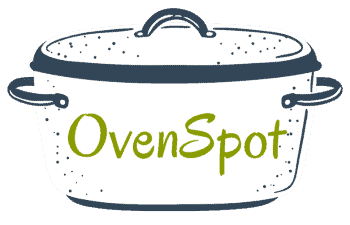Pickle Juice Benefits: Health and Athletic Advantages
When you think about pickle juice, you might only consider it as a leftover from your favorite snack. Yet, this briny liquid offers a wealth of potential health benefits that might surprise you. One of the key benefits of drinking pickle juice is its ability to relieve muscle cramps, thanks to its high vinegar content.
Drinking pickle juice can also aid in hydration. Its mix of vinegar, sodium, and potassium helps replenish electrolytes, which is especially beneficial after exercising or during a hangover. Some people turn to pickle juice for gut health and blood sugar control.
If weight management is on your agenda, the dill and vinegar components of pickle juice may support your goals by influencing metabolism. It’s essential to be mindful of its high sodium levels. Given these potential health benefits of drinking pickle juice, it’s clear why this pungent beverage is growing in popularity.

Nutritional Profile of Pickle Juice
Pickle juice offers several nutrients that support various bodily functions, particularly emphasizing hydration and electrolyte balance. You can benefit from its unique combination of vitamins, minerals, and high sodium content. The nutrient content can vary depending on the pickling liquid used by different manufacturers.
Vitamins and Minerals in Pickle Juice
Pickle juice contains essential vitamins and minerals that contribute to overall health.
Zinc: One important component is zinc, which plays a role in metabolism and digestion, with a serving providing 13% of your daily value.
Potassium: This mineral helps maintain muscle function and fluid balance.
Vitamin C and E: These antioxidants strengthen the immune system and improve skin health.
Pickle juice provides a small amount of these vitamins and minerals, making it a practical choice for those seeking a quick nutrient boost. Most pickle juice may not have a major impact on gut health due to pasteurization.
Sodium Content and Fluid Balance
One of the most notable aspects of pickle juice is its high sodium content. An eight-ounce serving can contain anywhere from 15-200 calories and up to 2,300 milligrams of sodium.
This high sodium concentration helps with fluid retention and can aid in rehydration after intense physical activity. However, the significant sodium levels could pose a risk for individuals with high blood pressure. Additionally, pickle juice, like other acidic foods, can pose risks for individuals with hypertension and stomach ulcers.
By maintaining fluid balance, pickle juice helps reduce muscle cramps and aids in quicker recovery.
Considering these factors, pickle juice serves as a natural option for replenishing electrolytes and restoring hydration effectively.
Health Benefits of Pickle Juice

Drinking pickle juice offers several notable benefits, such as aiding in blood sugar regulation, promoting gut health through probiotics, and alleviating muscle cramps during recovery.
Blood Sugar Regulation
Pickle juice may assist in regulating blood sugar levels. Some research suggests that the vinegar content in pickle juice has a positive impact on blood sugar control after meals, potentially helping to reduce blood sugar levels. Acetic acid in vinegar helps improve insulin sensitivity, leading to better glycemic management.
This can be particularly beneficial for people with type 2 diabetes or prediabetes seeking natural ways to manage their condition. Drinking a small amount before meals can help mitigate post-meal blood sugar spikes.
Gut Health and Probiotics
Consuming pickle juice can promote a healthy gut due to its probiotic content. Fermented pickle juice contains beneficial bacteria that support gut flora, enhancing digestive health. These probiotics, like Lactobacillus, contribute to maintaining a balanced gut microbiome. A healthy gut microbiome plays a crucial role in digestion, immune function, and overall wellness. Drinking fermented pickle juice can support gut bacteria diversity, contributing to a robust digestive system. Alternatively, fermenting cucumbers can provide probiotics without the high sodium content.
Muscle Cramps and Recovery
Pickle juice is commonly used to alleviate muscle cramps and aid in recovery. Athletes and fitness enthusiasts often consume it to quickly address muscle cramps during and after intense physical activities.
The high sodium content in pickle juice helps replenish lost electrolytes, which can prevent cramps. Moreover, research indicates that the acetic acid in the juice may stimulate nerve receptors in the throat, reducing cramp intensity and duration. For those experiencing frequent muscle cramps, incorporating pickle juice into your regimen might provide relief.
Practical Uses and Considerations
Pickle juice extends beyond mere hydration and nutritional benefits. Its unique properties make it a versatile addition to various culinary applications as well as a consideration for those on specific diets. You can have an occasional fermented pickle to mitigate sodium intake while still enjoying potential health benefits.
Culinary Applications and Preservation
Pickle juice is often overlooked in the kitchen. The leftover juice from a pickle jar can be used to marinate meats, adding a tangy flavor while helping to tenderize the protein. Fermented pickles offer an acidic brine that can serve as a base for sauces and dressings without the need for additional vinegar.
Another practical use includes preserving vegetables. You can reuse the juice from fermented pickles to pickle other vegetables such as carrots, onions, or cucumbers. This method is not only cost-effective but also enhances the taste of your preserved foods with minimal effort.
Additionally, pickle juice can be incorporated into cocktails, providing a unique twist to traditional drinks like Bloody Marys. Its acidity plays well with tomato juice, enhancing the overall flavor profile.
Dietary Considerations in Using Pickle Juice
Pickle juice is high in sodium, which is important if you’re considering it for dietary purposes. Those following a low-sodium diet may need to moderate their intake to avoid exceeding the recommended daily limits. Despite its benefits, the high salt content can be a concern for people with certain health conditions like hypertension.
On the flip side, pickle juice contains electrolytes such as potassium and sodium, making it a useful option for athletes or anyone needing to replenish lost electrolytes after a workout.
Pickle juice can support those trying to lose weight by stabilizing blood sugar, curbing appetite, improving digestion, and addressing late-night sugar cravings.
Beyond athletics, hangover relief is another popular use. Drinking pickle juice can help alleviate symptoms by rehydrating your body and restoring lost electrolytes.
Pro Tip: Be mindful of any added yellow dye in some commercial pickle juices, which may not be suitable for everyone. Opt for natural, dye-free options if you have sensitivities or prefer to avoid artificial additives.
Comparing Pickle Juice and Sport Drinks

Understanding the benefits of pickle juice versus traditional sports drinks can help you make an informed choice about what to consume for fitness and recovery. These beverages serve similar purposes but function differently in terms of electrolyte replacement and energy impacts.
Electrolyte Replacement
Pickle juice is packed with sodium, which benefits people prone to muscle cramps and dehydration. The vinegar base can aid in the rapid absorption of electrolytes like sodium and potassium.
Sports drinks also offer electrolyte replacement, specifically designed to replenish minerals lost during strenuous activities. Ingredients include sodium, potassium, and magnesium. However, unlike pickle juice, sports drinks often contain added sugars and artificial flavors.
Both can help maintain electrolyte balance effectively. If you’re watching your calorie intake or managing blood sugar spikes, consider the sodium content and absence of additional sugars in pickle juice.
Energy and Performance Impacts
Sports drinks provide not only hydration but also a quick energy boost, thanks to their carbohydrate content. These carbs can be beneficial for sustaining performance during long workouts by maintaining blood sugar levels. On the downside, high sugar content in sports drinks might lead to spikes in blood sugar, followed by crashes.
Pickle juice lacks carbohydrates and thus doesn’t offer the same immediate energy benefits. Instead, it focuses on muscle recovery and hydration. This can make pickle juice an appealing option if you’re managing body weight or seeking a low-calorie alternative. While it won’t provide a quick energy boost, the electrolytes and hydration support can still positively influence performance and recovery.
By considering these factors, you can choose the right drink to optimize your athletic goals and dietary needs.
Pickle Juice Recipe

Making your own pickle juice at home is straightforward and rewarding. You’ll need just a few simple ingredients and basic kitchen tools.
Ingredients
4 cups water
2 cups white vinegar
2 tablespoons salt
Optional: garlic, dill, grape leaves, or your favorite pickling spices
Instructions
Combine water, vinegar, and salt in a large pot.
Heat the mixture to a simmer. This helps dissolve the salt and blend the flavors.
Add optional spices like garlic, dill, or grape leaves if you wish to enhance the flavor.
Simmer for a few minutes to allow the spices to infuse.
Turn off the heat and let the mixture cool completely.
Tips for Best Results
Sterilize your container: Make sure the jar or bottle you use to store the pickle juice is clean to prevent contamination.
Adjust the flavor: Feel free to tweak the amount of salt or vinegar based on your taste preferences.
Storing Your Pickle Juice
Refrigerate the juice: Store it in the refrigerator to keep it fresh
and avoid the juice going off.Use within a month: While homemade pickle juice can last a while, it’s best used within one month for maximum flavor and benefits.
Learn about the exciting benefits of using pumpkin juice and lemon juice.
One-Pot Cooking Rocks!

Michelle
Hi, I’m Michelle, the founder, owner, author, and editor of OvenSpot. My passion for one-pot cooking commenced when I was working to prepare cafeteria lunches for school students. I am now on a mission to assist you in choosing the cooking pot or appliance you will use daily. As well as in-depth information to assist you in using and caring for your cookware and appliances. Along with the yummy recipes I use at home.
Questions? Reach out to Michelle at [email protected]
